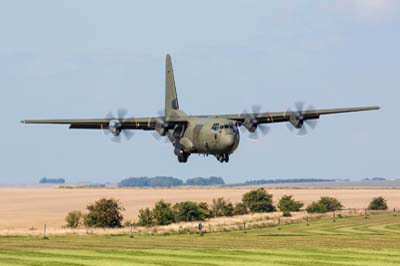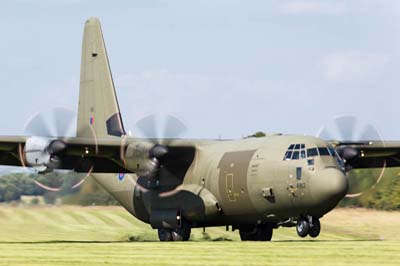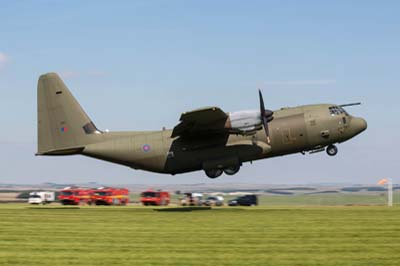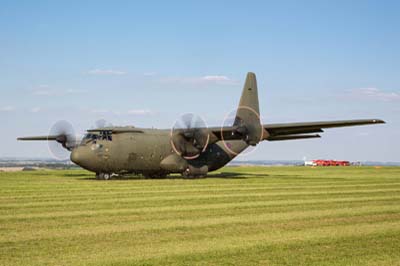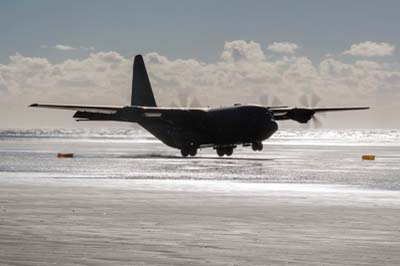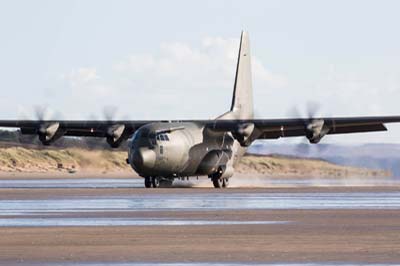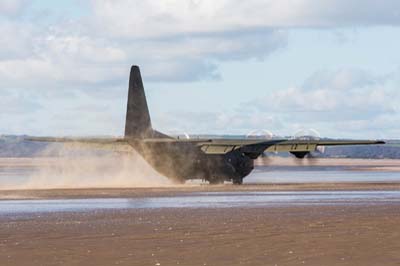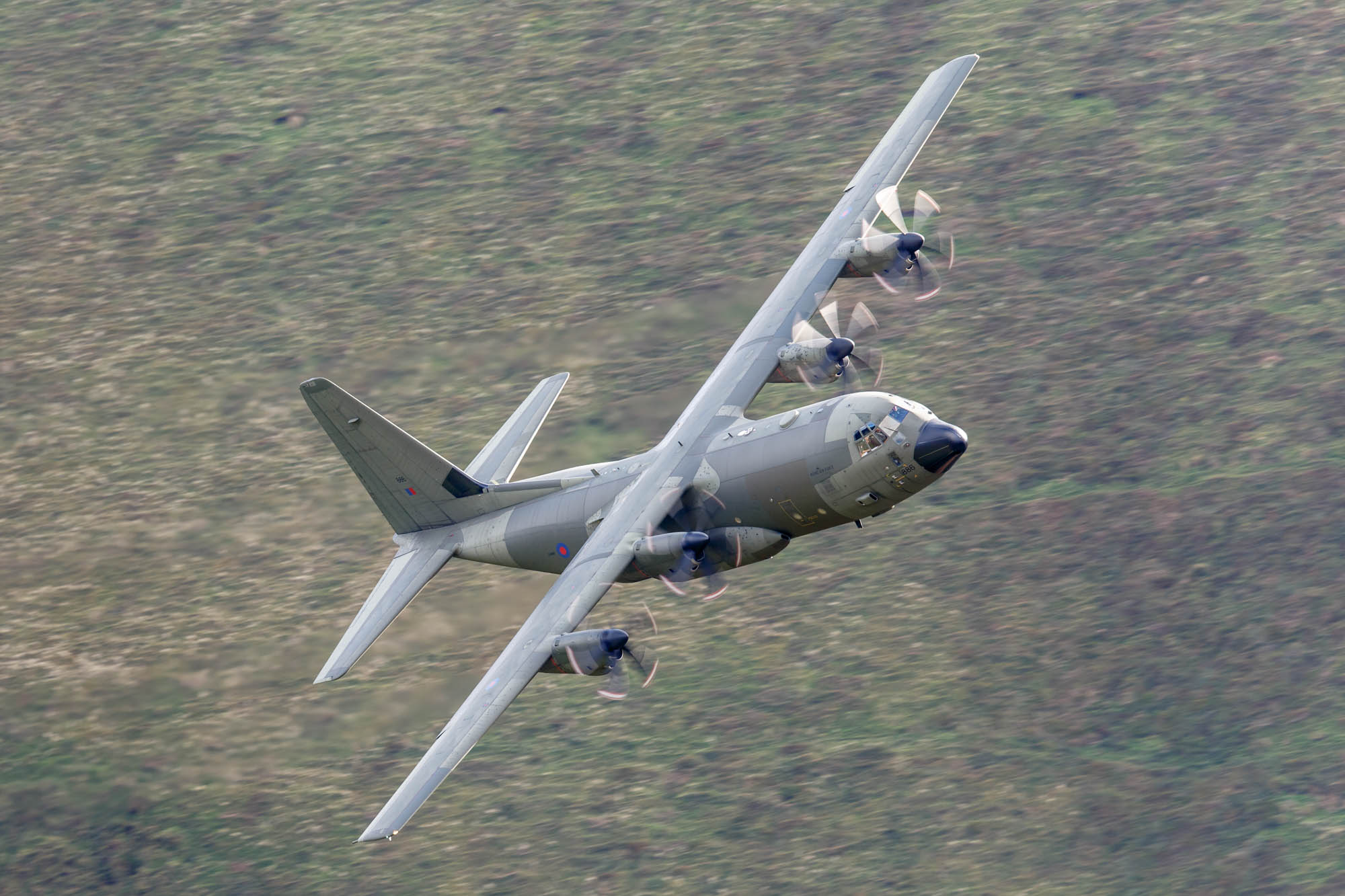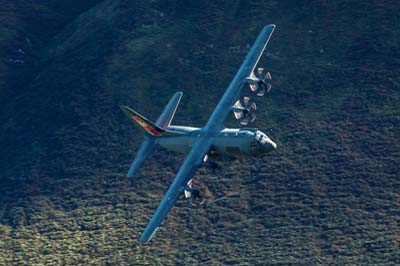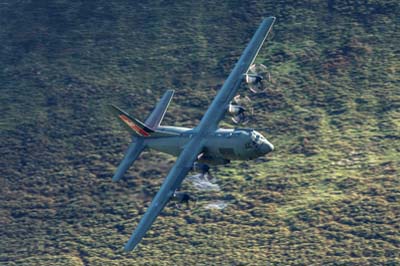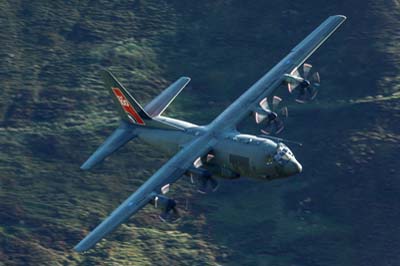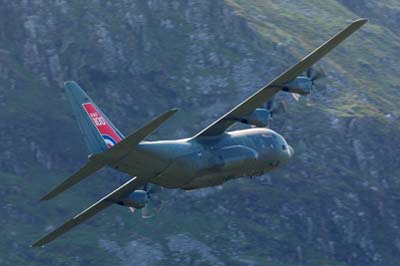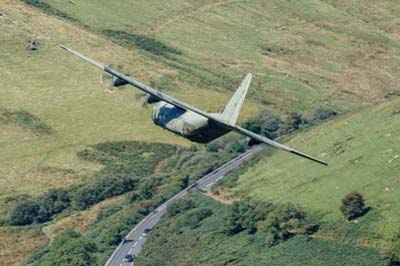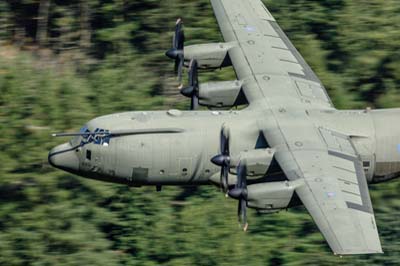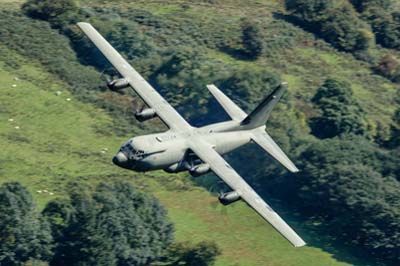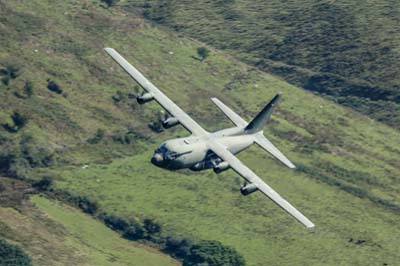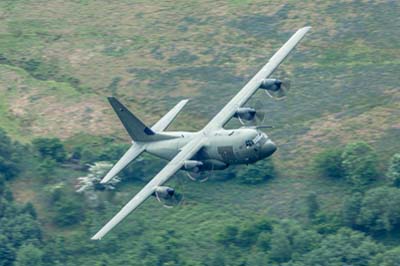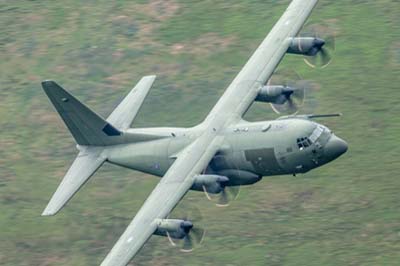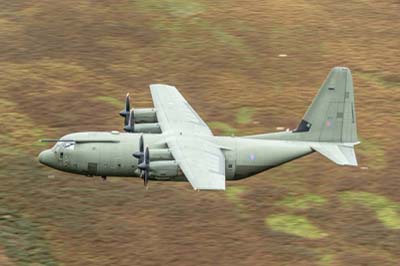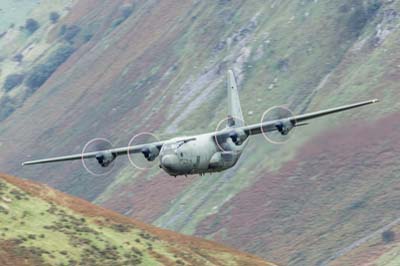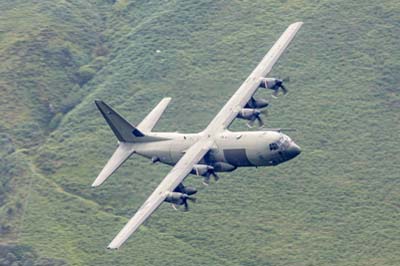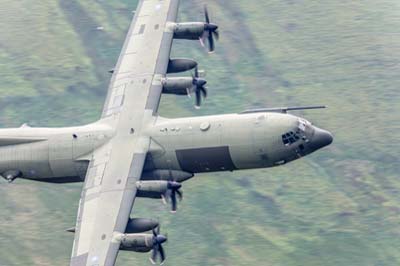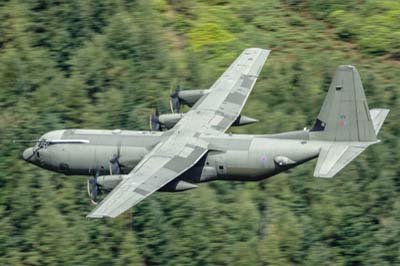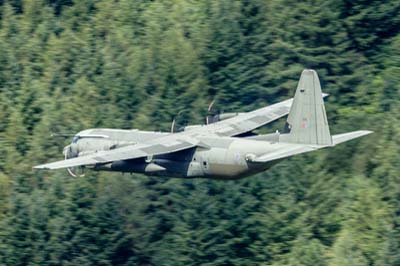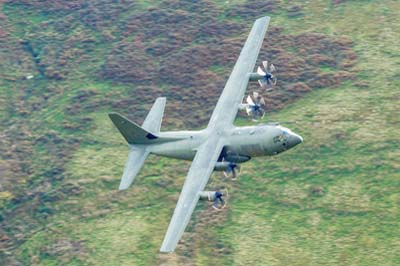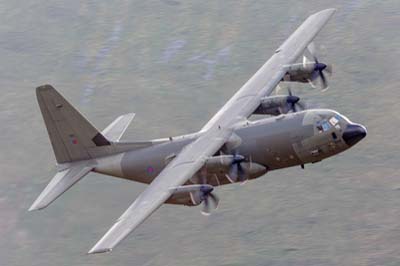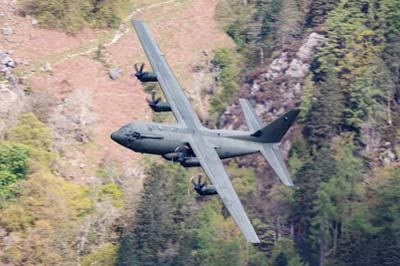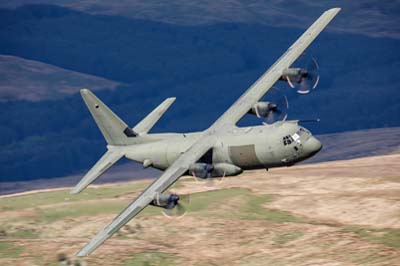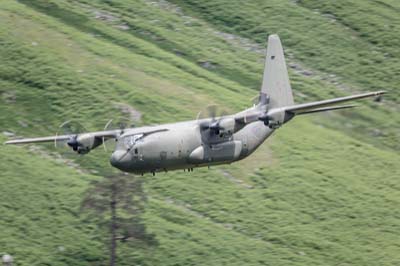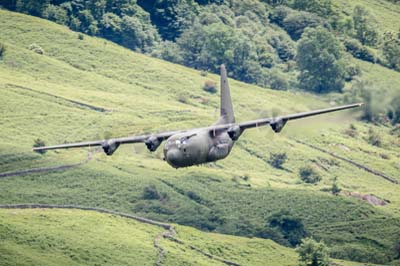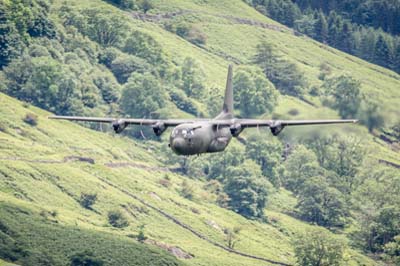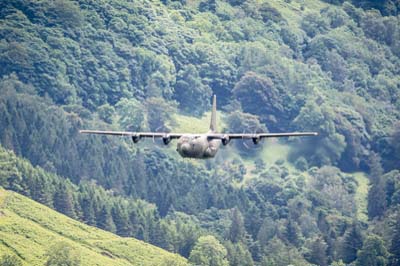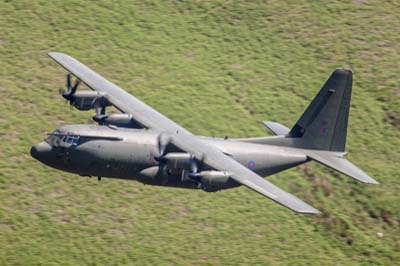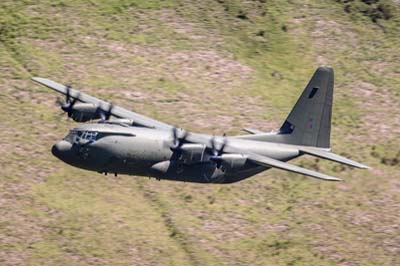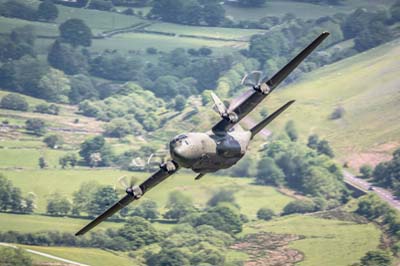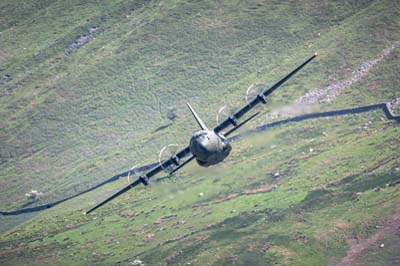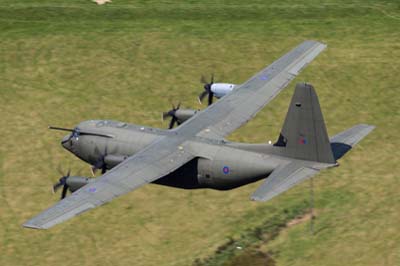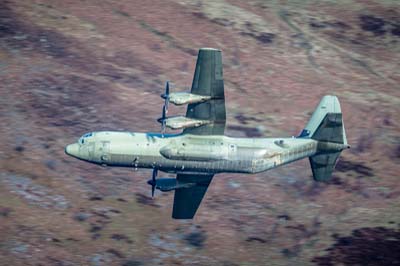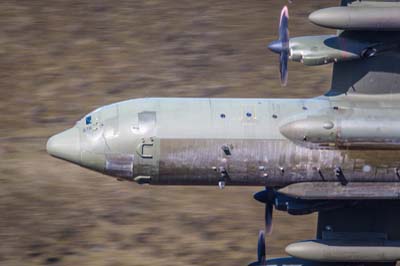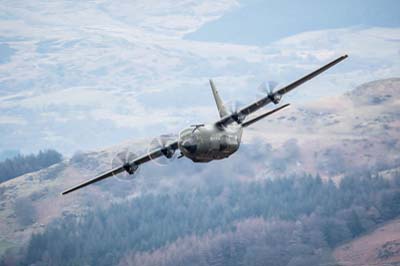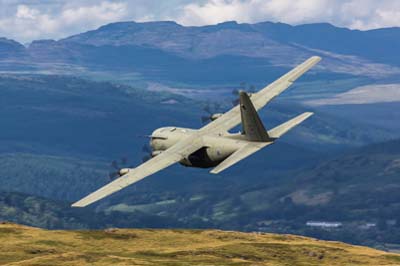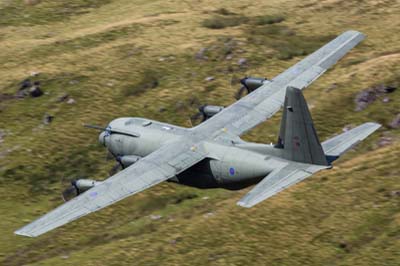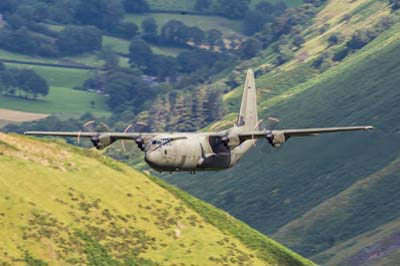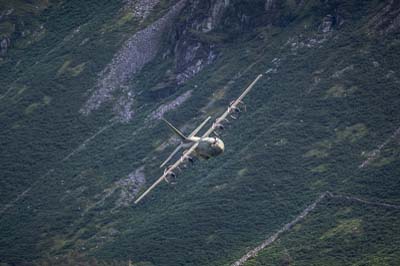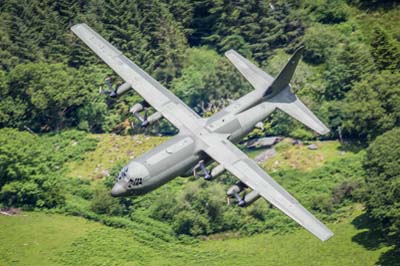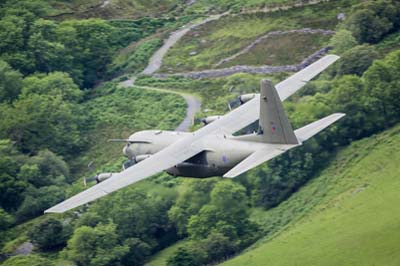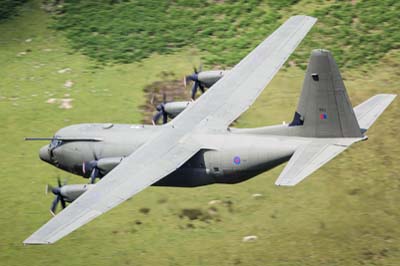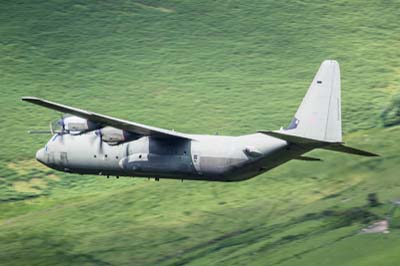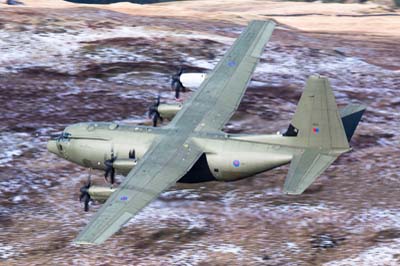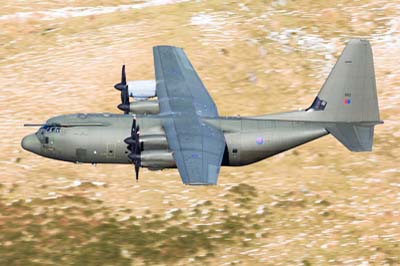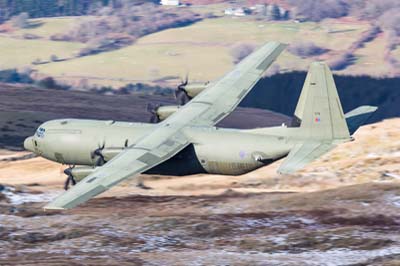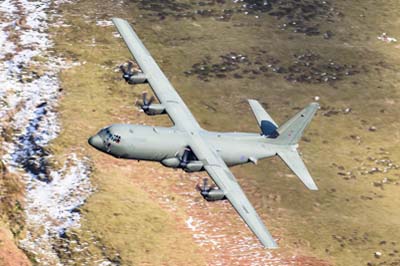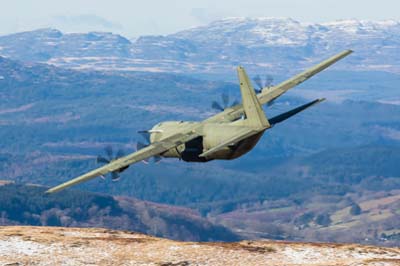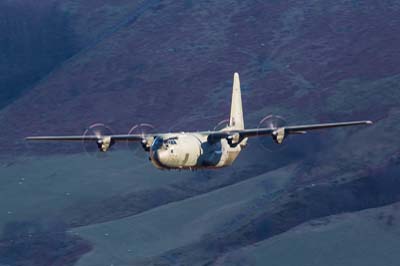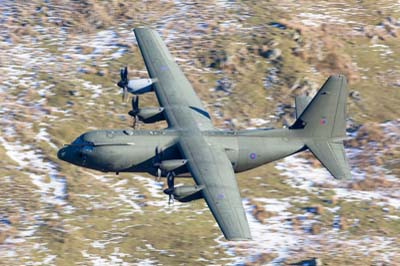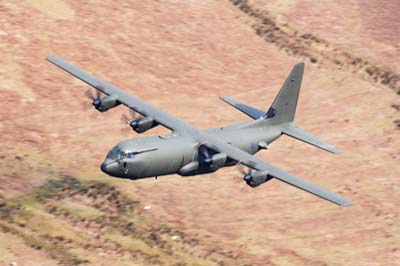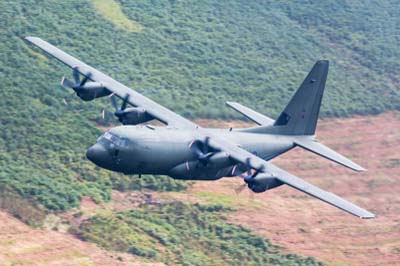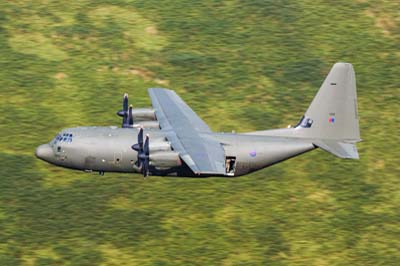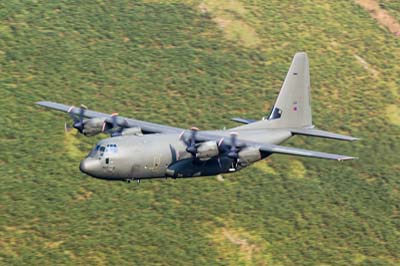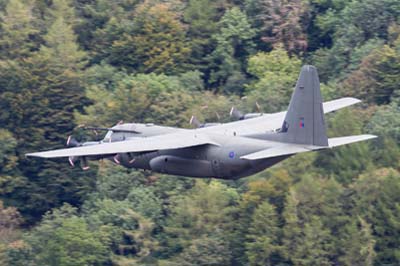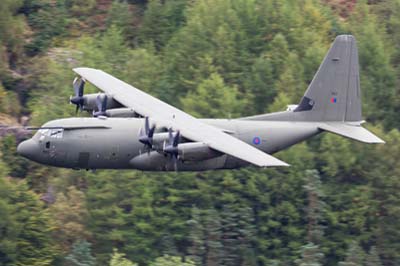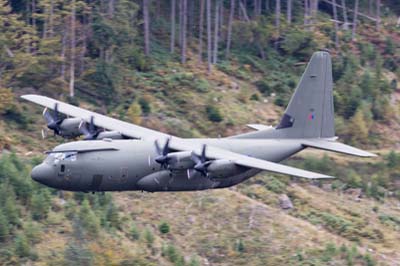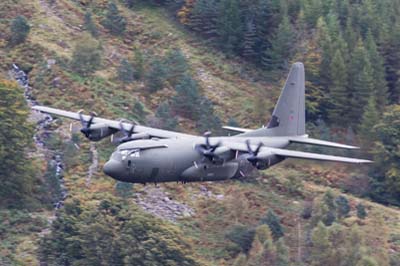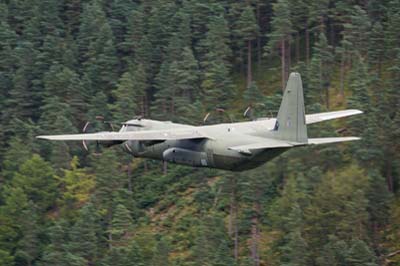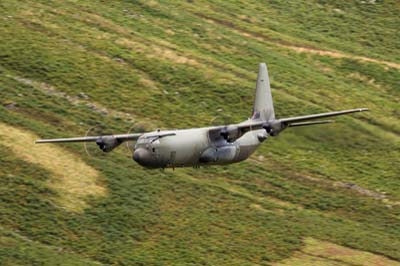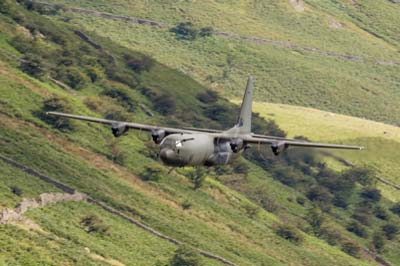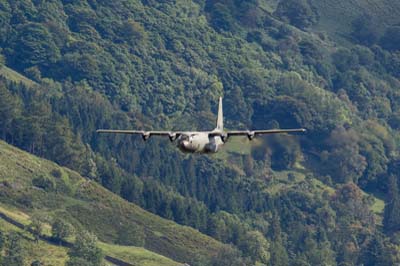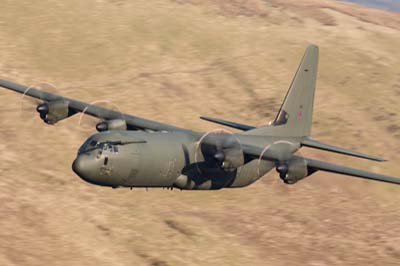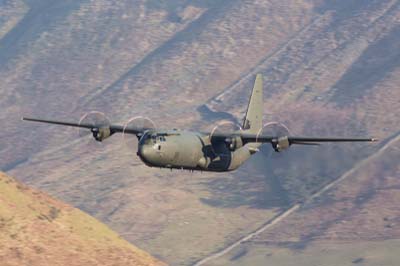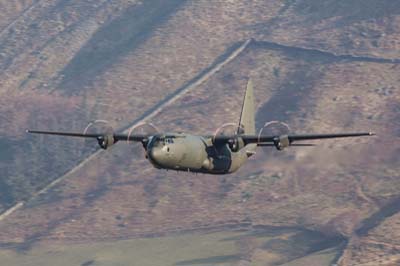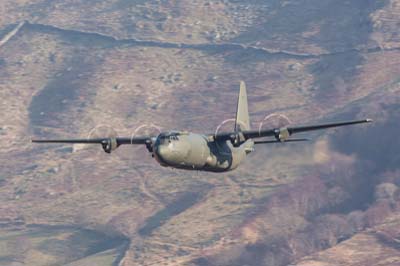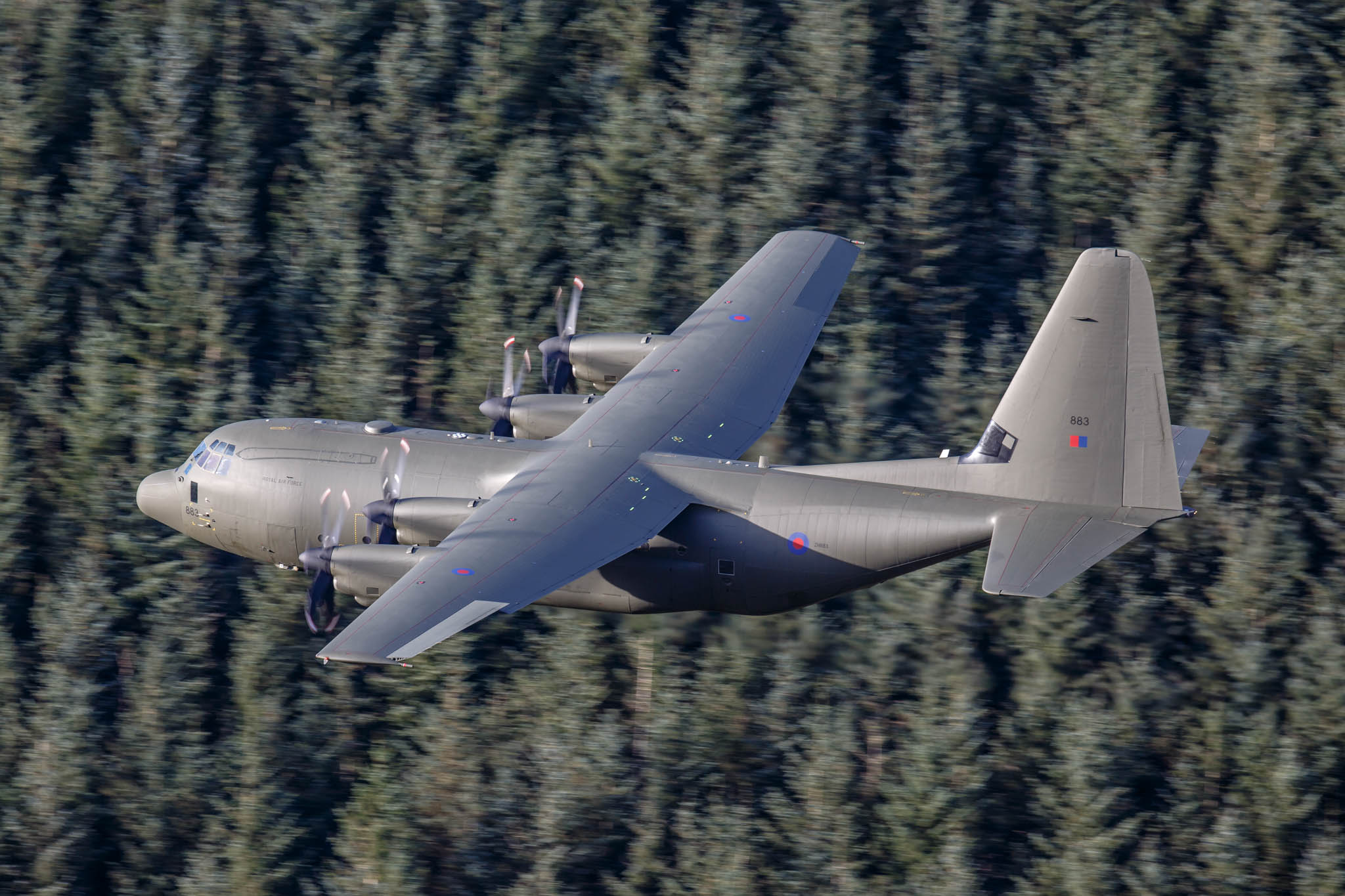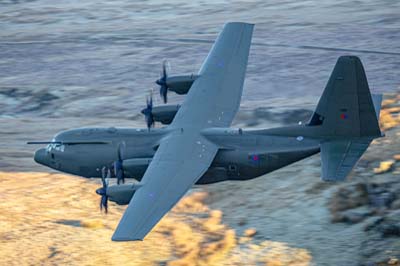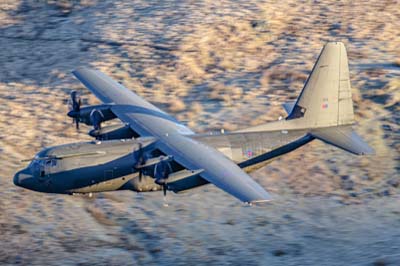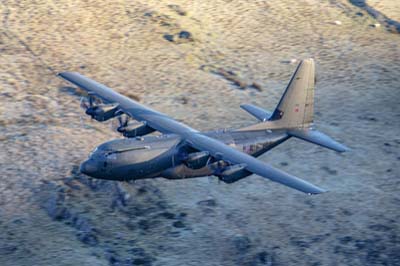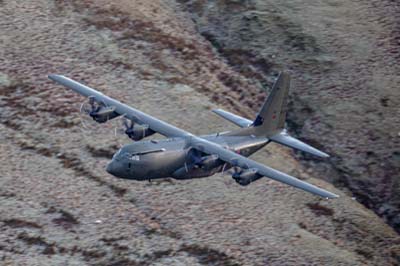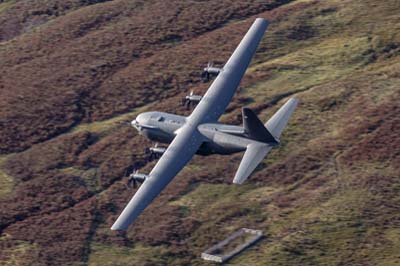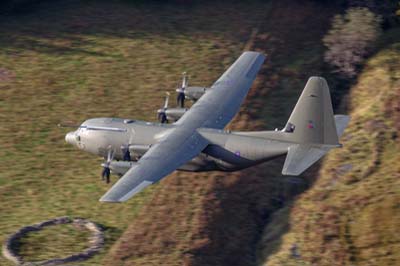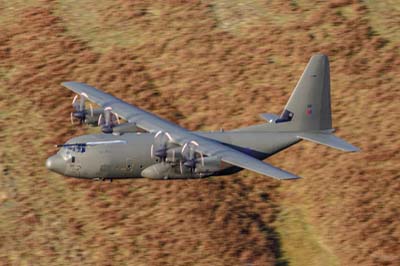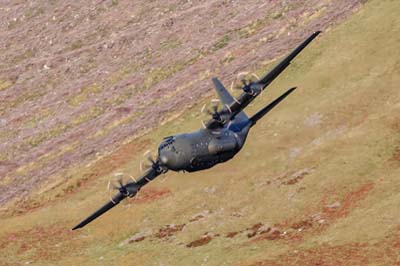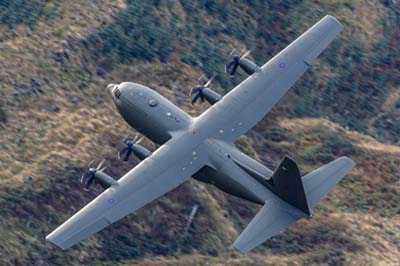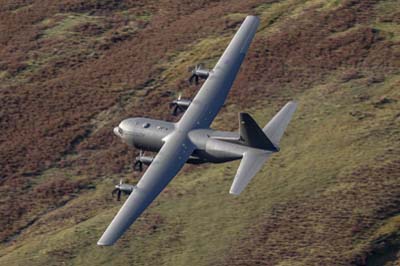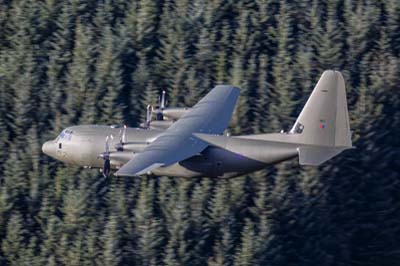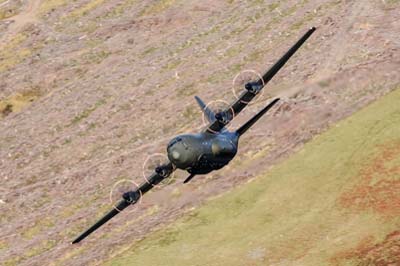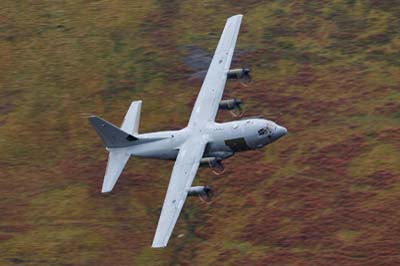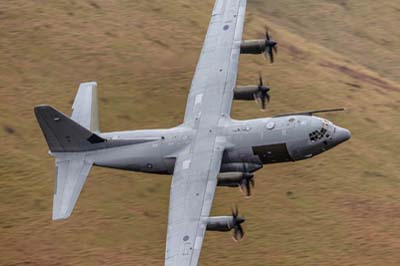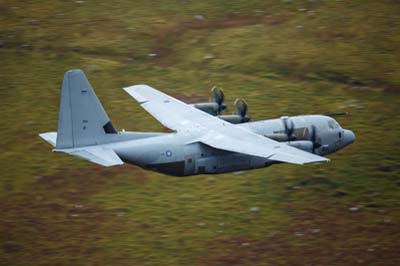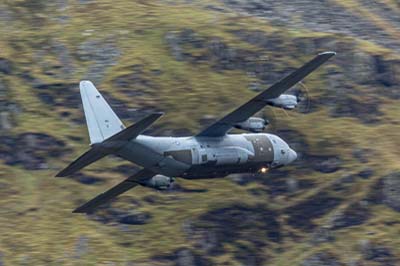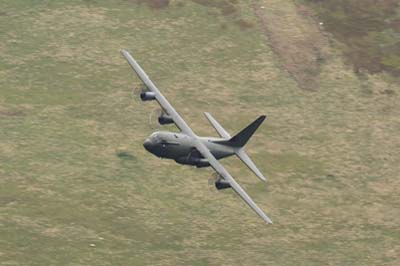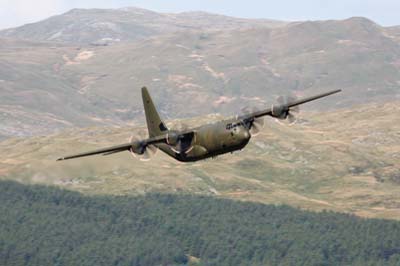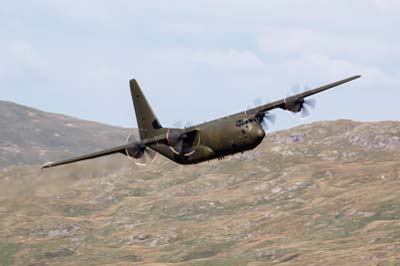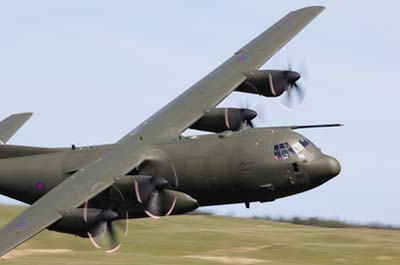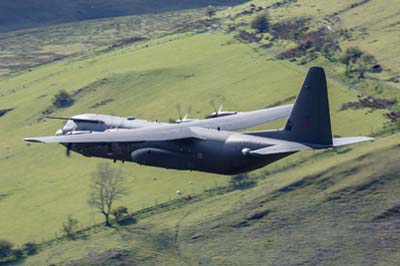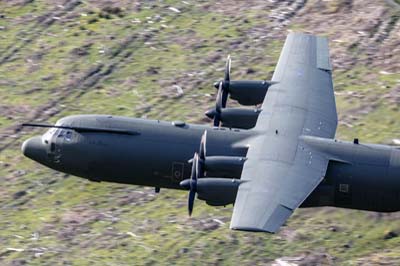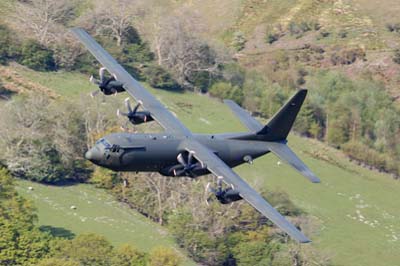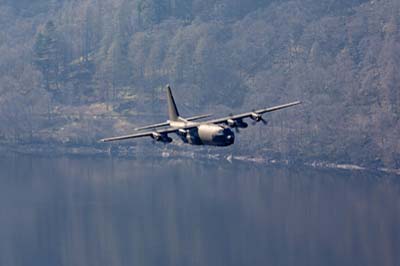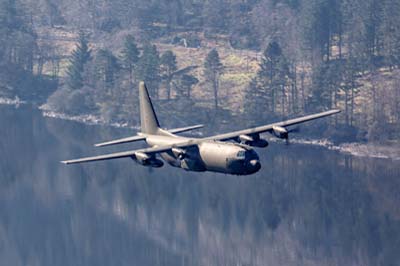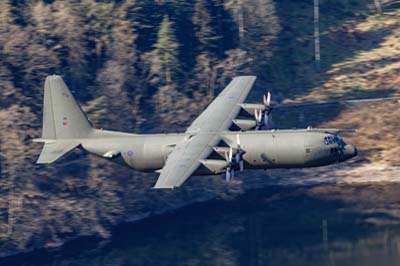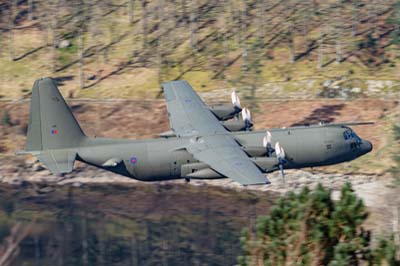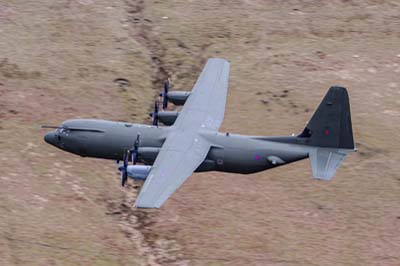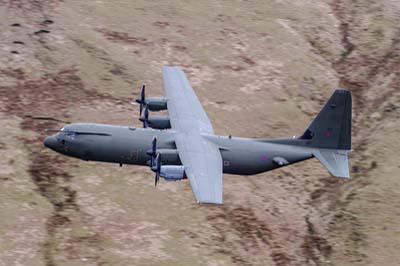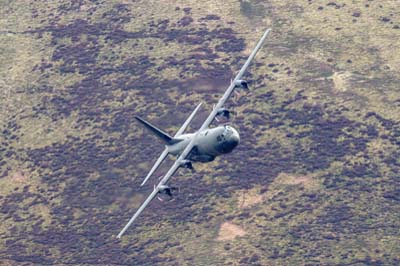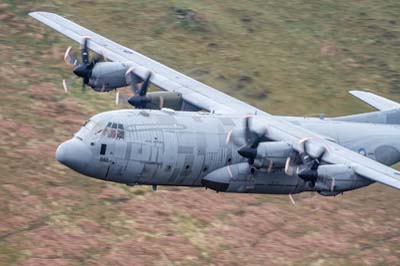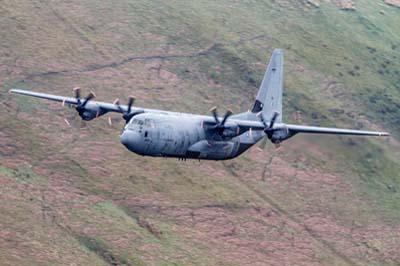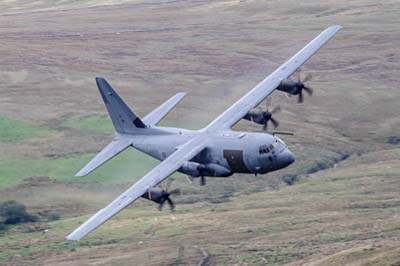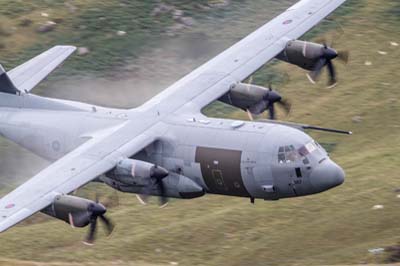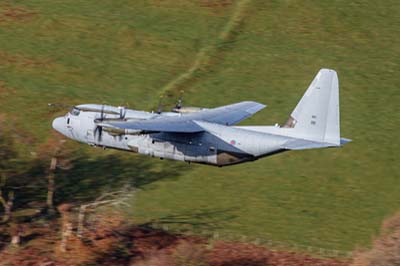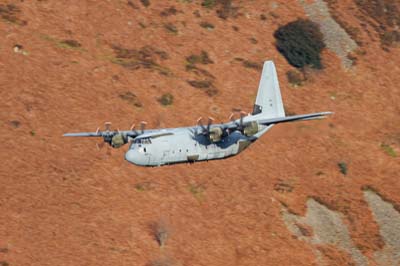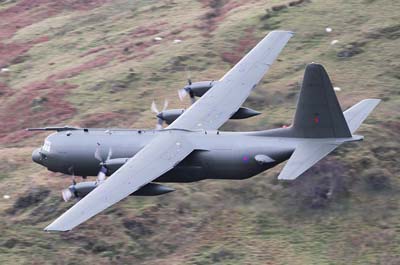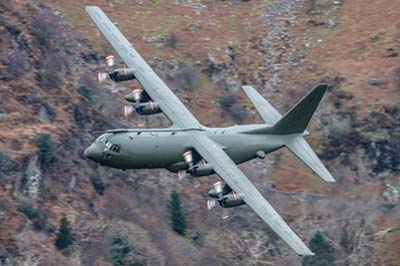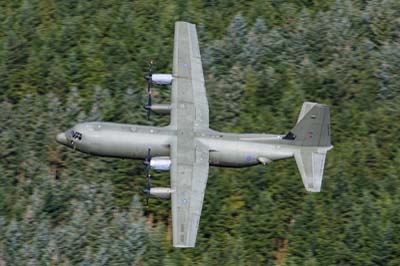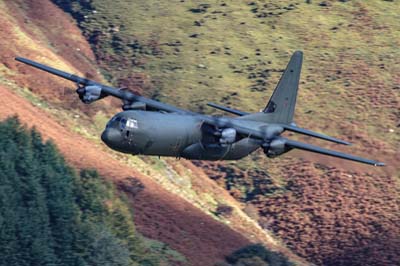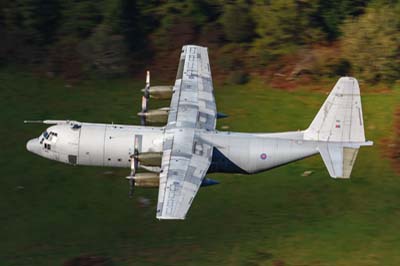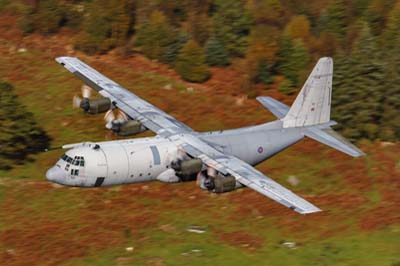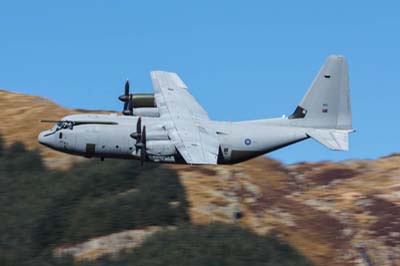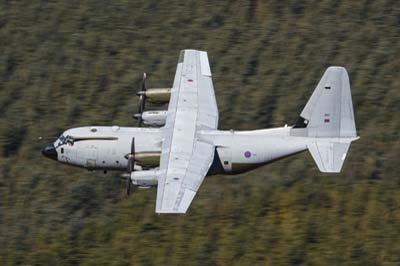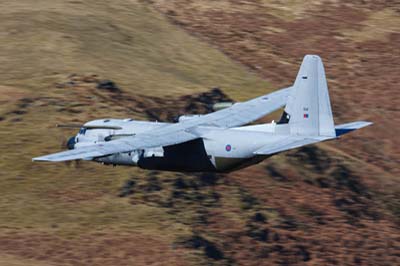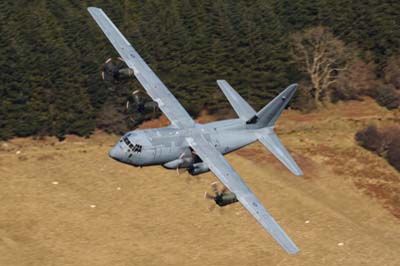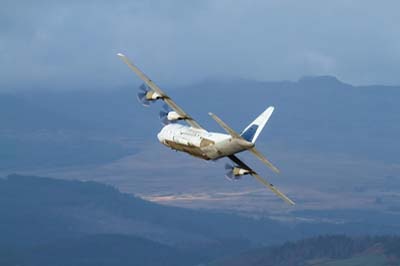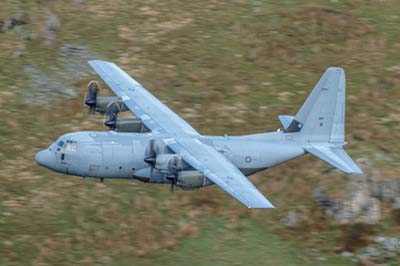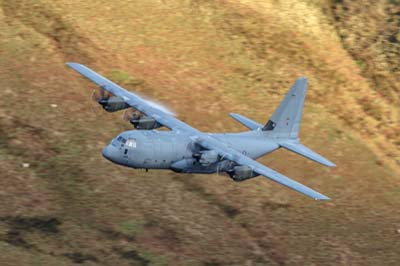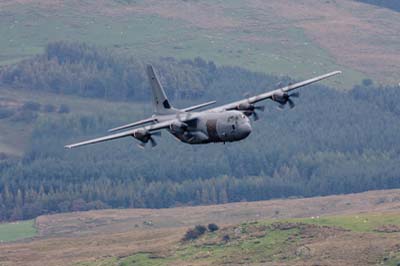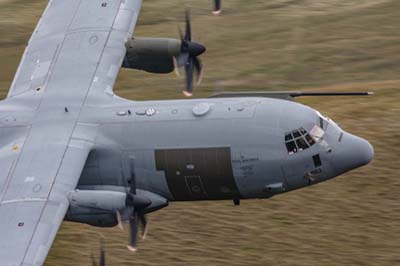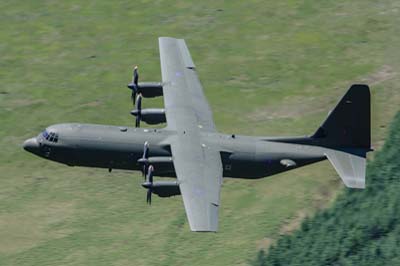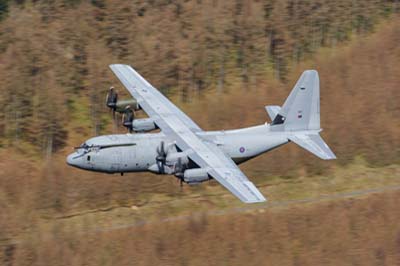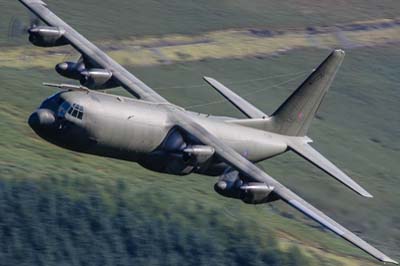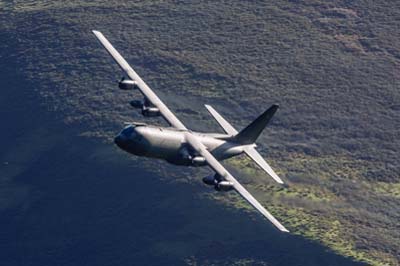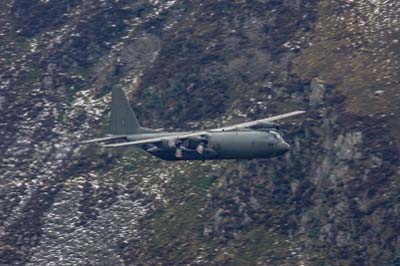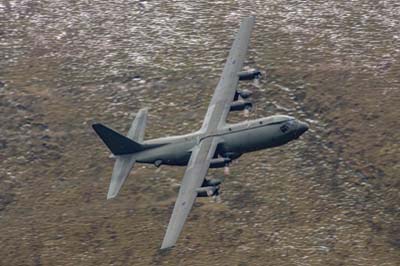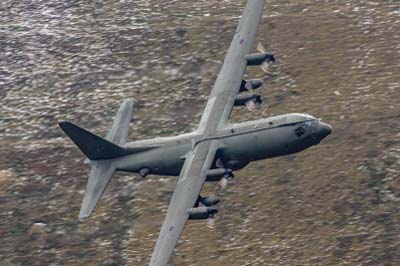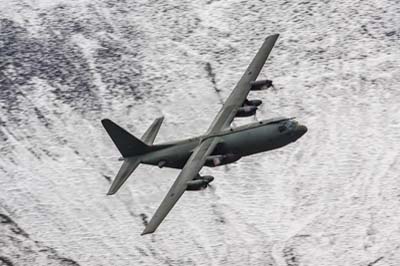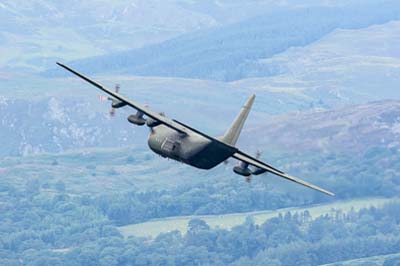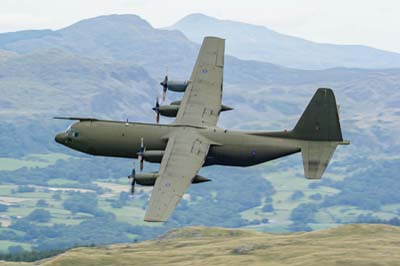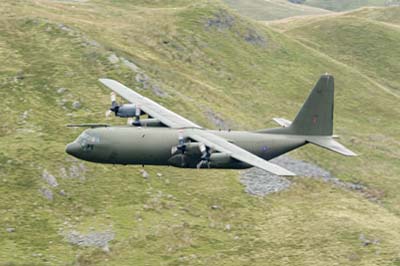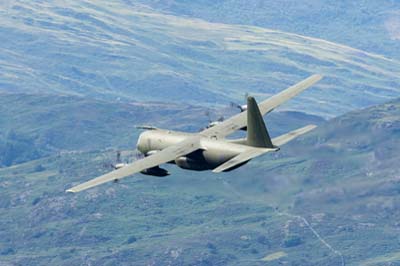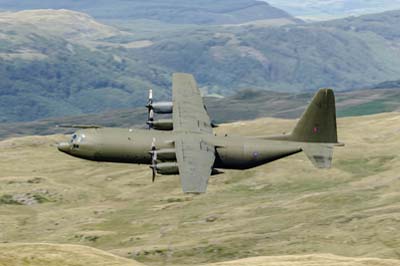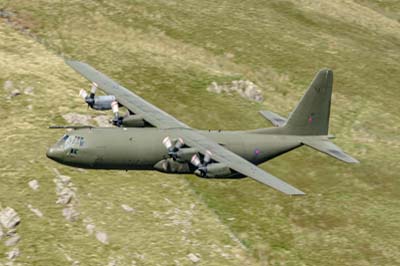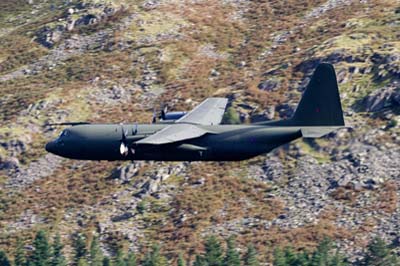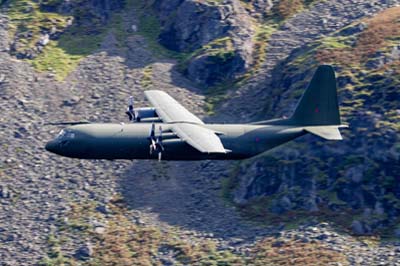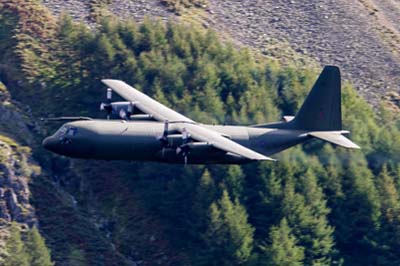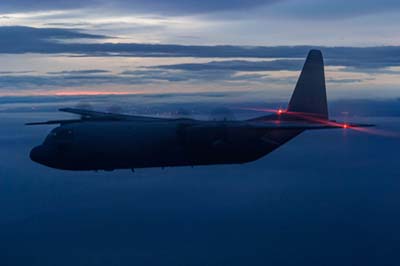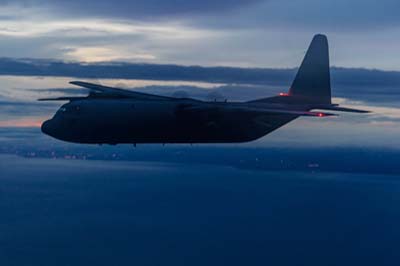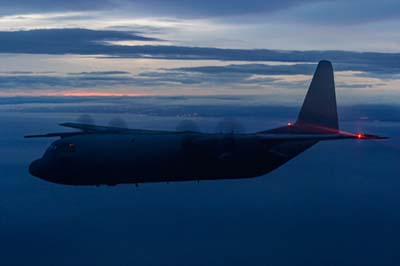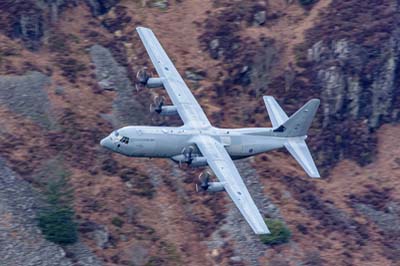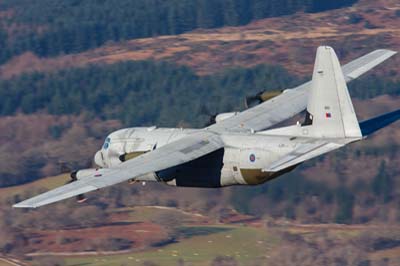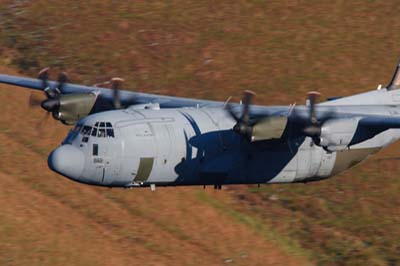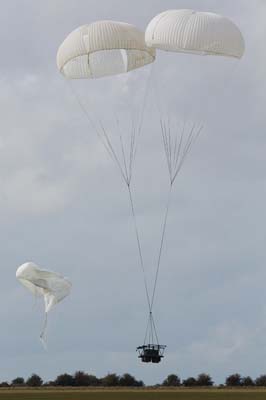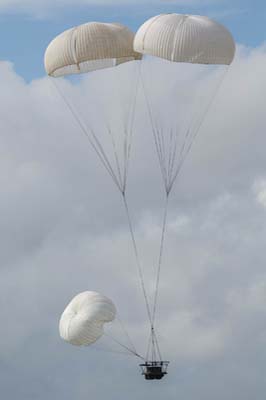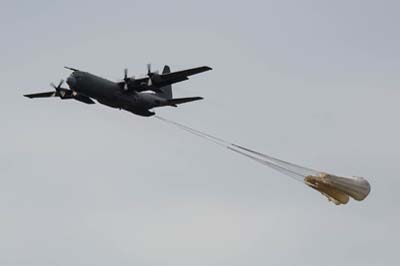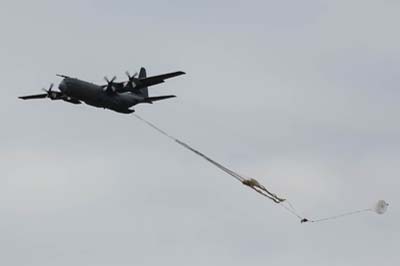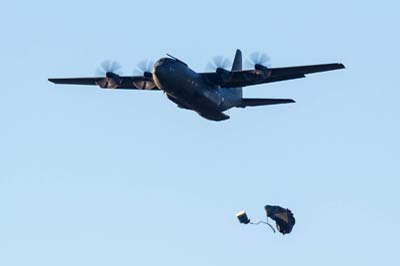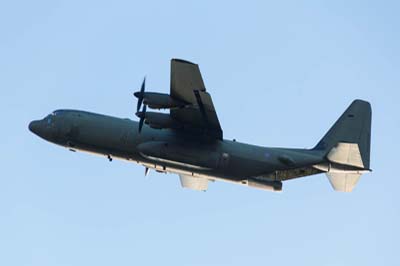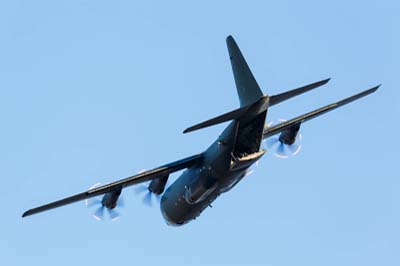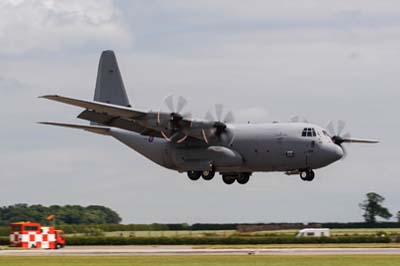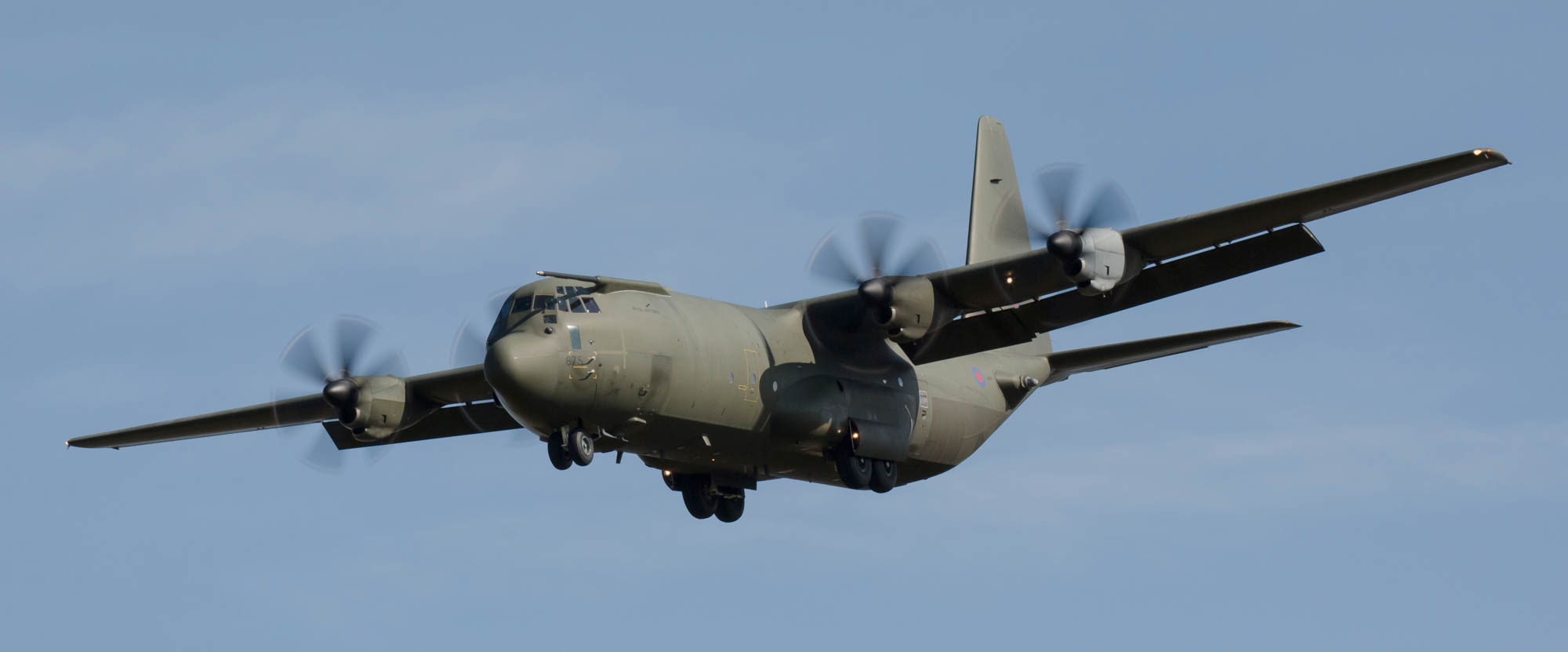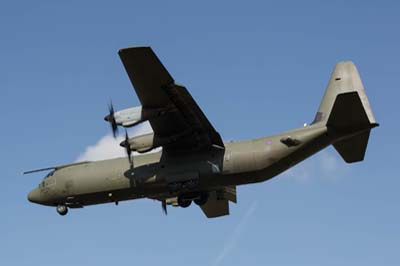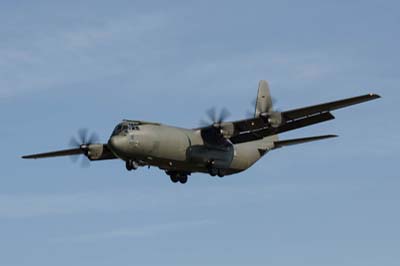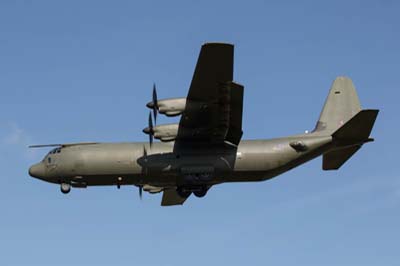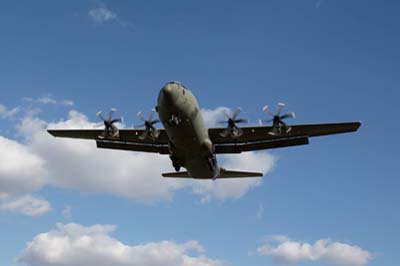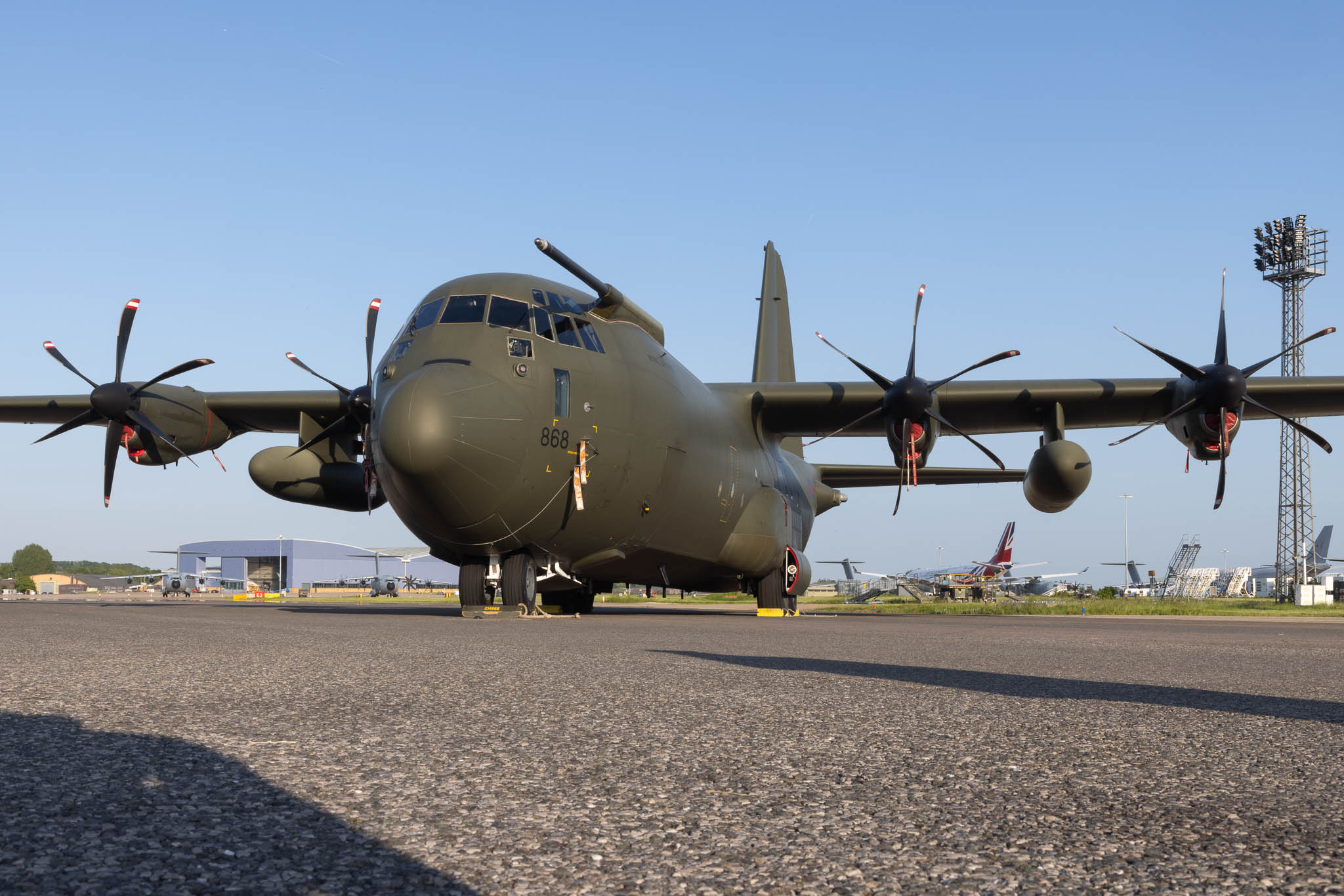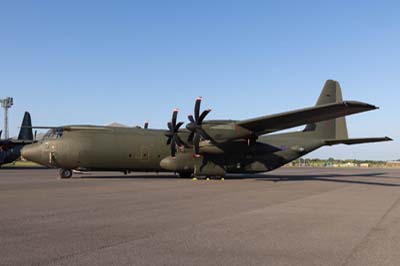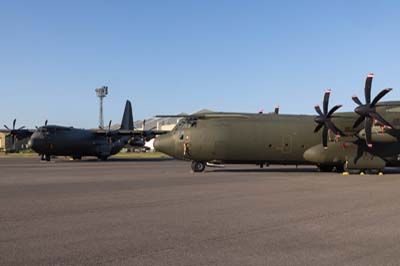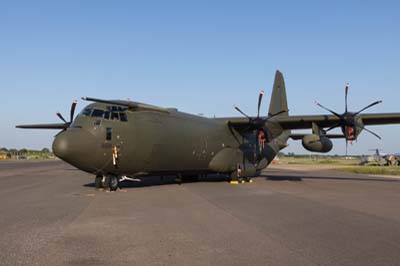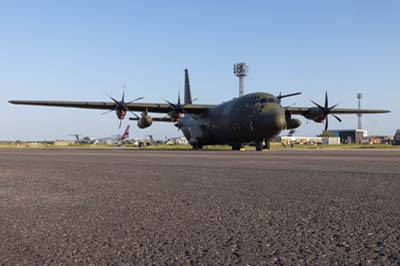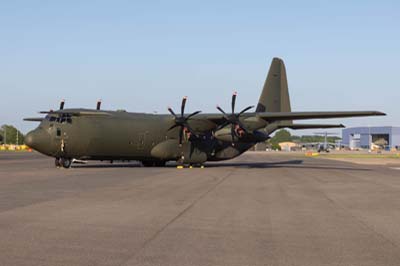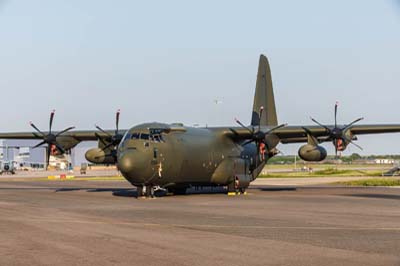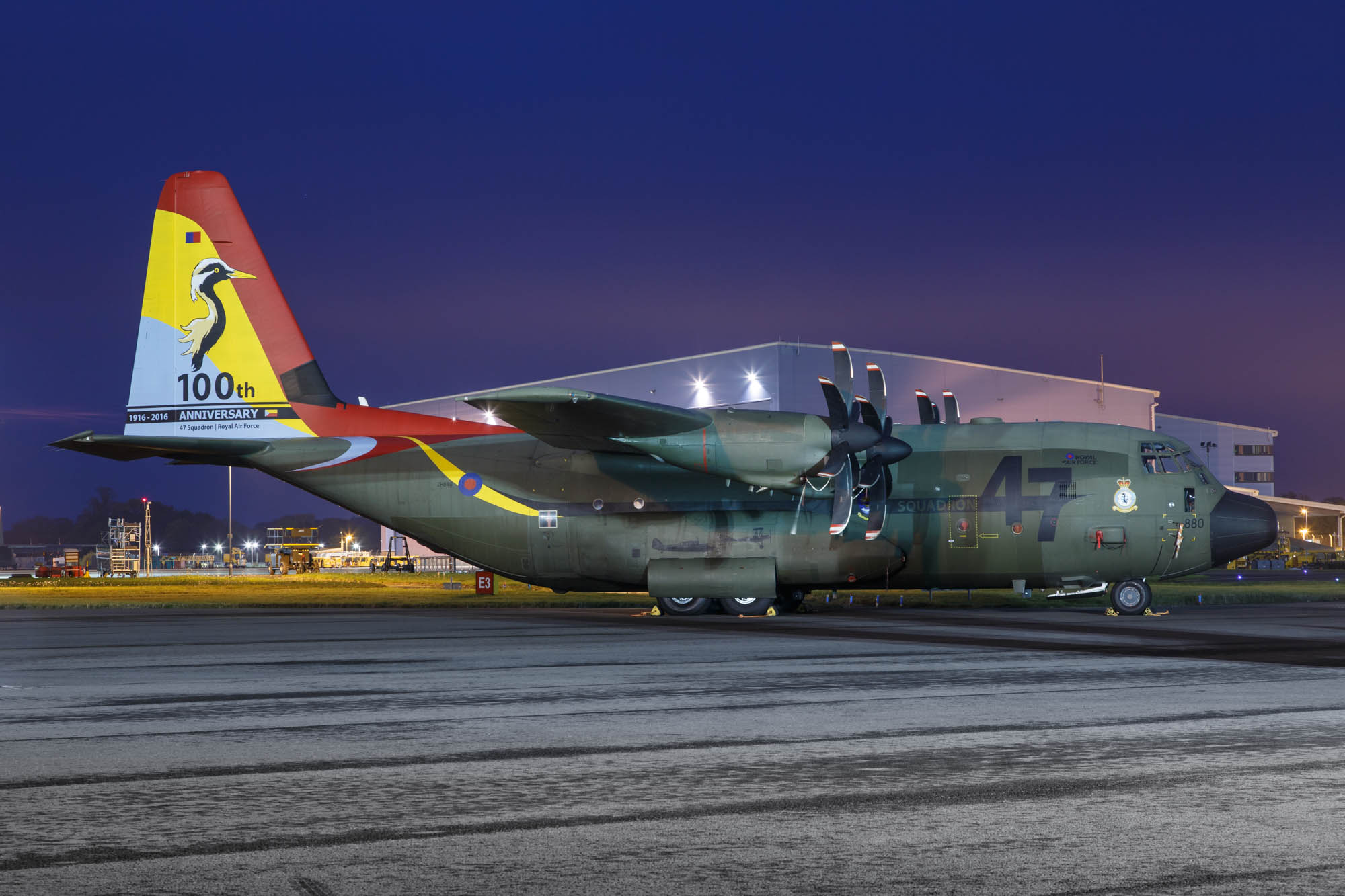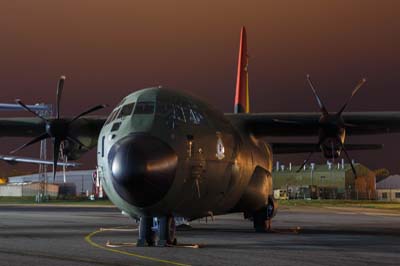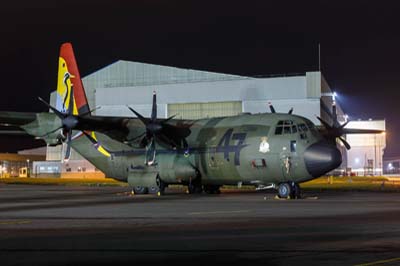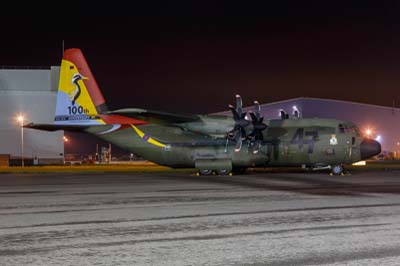C-130 Hercules in Action
Brize Norton Transport Wing (BNTW) - 24, 30 and 47 Squadron
The C-130 Hercules was retired from RAF service on June 30, 2023
RAF Brize Norton
|
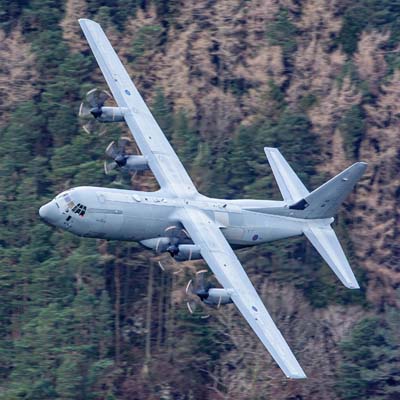 RAF Lyneham in Wiltshire was the home of the RAF's transport fleet of Lockheed C-130 Hercules until its move to RAF Brize Norton on July 1, 2011. It is over forty years since the first of 66 C-130K Hercules C.1 (most later upgraded to C.3 standard) were delivered to the RAF from August 1, 1967. Thirty or so years later a further 15 C-130J-30 Hercules C.4 and 15 C-130J Hercules C.5 were delivered to the RAF Lyneham Transport Wing (LTW). The remaining 'K' variants are expected to be in operation till around 2012.
RAF Lyneham in Wiltshire was the home of the RAF's transport fleet of Lockheed C-130 Hercules until its move to RAF Brize Norton on July 1, 2011. It is over forty years since the first of 66 C-130K Hercules C.1 (most later upgraded to C.3 standard) were delivered to the RAF from August 1, 1967. Thirty or so years later a further 15 C-130J-30 Hercules C.4 and 15 C-130J Hercules C.5 were delivered to the RAF Lyneham Transport Wing (LTW). The remaining 'K' variants are expected to be in operation till around 2012.
The LTW comprised 24, 30, 47 and 70 Squadrons (now with the A400M Atlas since reforming in October 2014) their role is Tactical Air Transport, 70 Squadron which operated the Hercules C.3 variant only were disbanded with the move to Brize Norton and the formation of the Brize Norton Transport Wing (BNTW). The BNTW comes under the command of 2 Group Air Combat Support and Air Battle Management and the 38 Expeditionary Air Wing (EAW). 24 Squadron operates the C.4 variant, 30 Squadron the C.4 and C.5, C.3A and 47 Squadron the C.1, C.3 and C.3A. By March 2011 there were only nine C-130Ks in operation, three C.1s, one C.3 and five C.3As. In October 2013 the last remaining C-130Ks were withdrawn from service, the final low-level sorties were flown by a pair through the Loop and Lake District on October 25, 2013.
The C-130 fulfils a variety of roles for the RAF. In the Air Transport role the C-130 is ideal for short haul operations of troops and equipment. As the C-130 can land on short and unprepared landing strips, its rugged design means it is suited to Tactical Air Land Operations. Troops and equipment can be off-loaded in full fighting order in rapid time. If required troops, including Special Forces and equipment can be dropped by parachute on to a Drop Zone (DZ) within a five minute window. Delivery profiles can include High Altitude, High Opening (HAHO) or High Altitude, Low Opening (HALO). The Air Loadmaster who is responsible for everything behind the flight-deck can work with Ground Engineers working as threat observers, to air drop troops and supplies day or night. Search and Rescue (SAR) operations have also been added to the role of these aircraft, in place of the Nimrod MR.2s on occasions. Inflatable life rafts and divers can be dropped into the sea. The fleet of C-130s are also available at short notice to deliver humanitarian aid and non-combatant evacuation.
Some operations demand that the crew fly the C-130 at low-level. Operating such a large aircraft at low-level is as demanding as it is thrilling. It involves managing a large crew and utilising defensive tactics with a comprehensive range of defensive aids. Unlike fast-jets the C-130 is unable to climb out of some tricky situations, pilots have to be constantly aware of their escape options. A typical low-level training sortie will include 'events' ranging from dummy drop zones, live drops to Natural Surface Operations. The C-130 during low-level operations in hostile environments are potentially vulnerable to air-to-air threats, consequently crews practice fighter evasion exercises, often at night using night-vision goggles (NVG). |
| Natural Surface Operations - Grass strip at Deptford Down (SPTA) |
| Left to right: C-130J Hercules C.5 (ZH882) at Deptford Down on September 10, 2015. |
| Natural Surface Operations |
| Left to right: C-130J Hercules C.5 (ZH884) at Pembrey Sands on November 4, 2013. |
| C-130J Hercules C.5 (ZH886) callsign 'Jigsaw Flight' in the Loop in October 2016. |
| Left to right: C-130J Hercules C.5 (ZH887) of 30 Squadron with RAF 100 'sticker' in September 2018. |
| Left to right: C-130J Hercules C.5 (ZH889) in mid-Wales using callsign 'RRPHD - Ascot 189' in August 2018. |
Left to right: C-130J Hercules C.5 (ZH888) using callsign 'Ascot 335' low in Mid-Wales in May 2018.
C-130J Hercules C.5 (ZH889) in mid-Wales using callsign 'Ascot 187' in October 2018. |
Left to right: C-130J-30 Hercules C.4 (ZH873) using callsign 'Comet 235' in Wales in June 2017.
C-130J Hercules C.5 (ZH878) in Wales in August 2017. |
Left to right: C-130J Hercules C.5s (ZH888 and ZH886) callsign 'Jigsaw Flight' in October 2016.
C-130J Hercules C.5 (ZH882) and C-130J Hercules C.4 (ZH875) in May 2017.
|
| Left to right: C-130J Hercules C.5 (ZH888) low in the Lakes in June 2016. |
| Left to right:C-130J Hercules C.5 (ZH887 and ZH882) of 30 Squadron callsign 'Oman 2' on June 2, 2016 through the Loop. |
Left to right: C-130J Hercules C.5 (ZH882) of 30 Squadron in August 2015. C-130J-30 Hercules C.4 (ZH875) from the Brize Norton Transport Wing and operated by 24/30/47 Squadrons flying low in southern Scotland in February 2016.
C-130J Hercules C.5 (ZH878 and ZH880) in Wales in March 2016. |
| Left to right: C-130J Hercules C.5 (ZH885) of 30 Squadron in August 2015. |
| Left to right: C-130J Hercules C.5s (ZH878, ZH883 and ZH875) callsigns 'Zorro 1-2' and 'Ascot 366' in June 2015. |
| Left to right: C-130J Hercules C.5s (ZH882 and ZH879) callsign 'Jigsaw 1-2' in Wales in February 2015. |
| Left to right: C-130J-30 Hercules C.4 (ZH870) in the Loop and C-130J Hercules C.5 (ZH882) in February 2015. C-130J Hercules C.4 (ZH867) in March 2015. |
| Left to right: C-130J Hercules C.5 (ZH881 and ZH884) in the Loop in September 2014. |
| Left to right: C-130J Hercules C.5 (ZH885) in the Lake District in October 2013. |
| Left to right: C-130J-30 Hercules C.4 (ZH865) flying low through the Lakes in September 2013. |
| Left to right: C-130J Hercules C.5 (ZH879) low through mid-Wales in March 2013. |
| C-130J Hercules C.5 (ZH881) in October 2012. |
| Left to right: C-130J Hercules C.5 (ZH883) in mid-Wales in December 2012. |
| Left to right: C-130J Hercules C.5 (ZH881) first of a pair flying very low through the Selkirk to Moffat valley during a TTA slot in October 2012. |
| Left to right: C-130J Hercules C.5 (ZH883) flying very low through the Selkirk to Moffat valley in October 2012. |
| Left to right: C-130J Hercules C.5 (ZH888) it had I think been working with a Cobham Mystere 20 using callsign 'Ascot 661' in November 2012. |
| Left to right: C-130J Hercules C.5 (ZH882) in mid-Wales in May 2013 and C-130J Hercules C.5 (ZH880) with 30 Squadron it was using calsign 'Ascot 140' and operating from Brize Norton in May 2012. |
| Left to right: C-130J-30 Hercules C.4 (ZH877) with 30 Squadron operating from Brize Norton in May 2012. |
| Left to right: C-130K Hercules C.3A (XV188) of 47 Squadron very low above Thirlmere in the Lake District in March 2012. |
| Left to right: C-130J-30 Hercules C.4 (ZH875) using an 'Ascot' callsign in mid Wales in March 2012. |
| Left to right: C-130J Hercules C.5 (ZH888 and ZH887) of 30 Squadron in April 2011 and August 2011. |
| Left to right: C-130J Hercules C.5 (ZH885) of 30 Squadron and C-130K Hercules C.3 (XV214) in Wales in November 2010. |
| Left to right: C-130J-30 Hercules C.4 (ZH869) and C-130K Hercules C.3 (XV301) of 47 Squadron in October 2010 in mid Wales, it was retired from service on March 31, 2011. |
| Left to right: Three C-130J Hercules C.5s (ZH883, ZH884 and ZH889) of 30 Squadron on three seperate sorties on the same day in March 2010. |
| Left to right: C-130J Hercules C.5 (ZH889) of 30 Squadron in December 2009. |
Left to right: C-130J Hercules C.5 (ZH883) of 30 Squadron in September 2009. The green panels are as a result of Marshall's of Cambridge fitting an anti-abrasion system.
C-130J-30 Hercules C.4 (ZH870) in June 2010. The blisters on the rear fuselage side house the Nemesis DIRCM self-protection system against heat-seeking missiles.
|
| Left to right: C-130J Hercules C.5 (ZH884) of 30 Squadron in March 2009. C-130K Hercules C.3 (XV221) low-flying in mid Wales in September 2009, it was retired from service on March 31, 2011. |
| Left to right: C-130K Hercules C.3A (XV303) made two passes in mid Wales in February 2009. |
| C-130K Hercules C.3 (XV202) in mid Wales in 2007. |
| Left to right: C-130K Hercules C.3 (XV202) low-flying in mid Wales in August 2007. |
| Left to right: C-130K Hercules C.3 (XV202) later in the day low-flying in mid Wales in August 2007. |
| Left to right: C-130K Hercules C.3 (XV307) at low-level in the Lake District in September 2004. |
| Pilots are trained to fly at low-level at night using night-vision goggles (NVGs). Air to air refuelling (AAR) day and night is also a requirement. From dusk onwards C-130K Hercules C.3 (XV301, c/s Ascot 690) is seen here during an AAR mission with 216 Squadron TriStar in November 2004 over the North Sea. |
| C-130J-30 Hercules C.4 (ZH871) and Hercules C.5 (ZH883) low-level in Wales. |
C-130K Hercules C.3A (XV209) para-drop over the Drop Zone (DZ) on the Salisbury Plain Training Area (SPTA) in October 2012.
|
| Left to right: C-130J-30 Hercules C.4 (ZH875) using callsign 'Jigsaw Flight' in November 2016. |
The RAF with its shorter but newer C-130J Hercules C.5 (ZH885), produced an impressive 'Khe Sanh' style approach and landing, diving onto the airfield at the 2004 Waddington air display.
C-130J Hercules C.5 (ZH888) at Waddington air show in 2005. |
| C-130J-30 Hercules C.4 (ZH875) landing at Brize Norton in March 2013. |
C-130J-30 Hercules C.4s (ZH875, ZH879 and ZH872) with 30 Squadron on approach to Brize Norton.
|
| Lockheed C-130J Hercules C.5 (ZH886) at Brize Norton on May 27, 2023. |
| Lockheed C-130J Hercules C.5 (ZH886) at Brize Norton on May 27, 2023. |
| Lockheed C130J Hercules C.5 (ZH880) in a special 47 Squadron 100th anniversary scheme in October 2016. |
| Left to right: Lockheed C130J Hercules C.5 (ZH880)in a special 47 Squadron 100th anniversary scheme in October 2016. |
